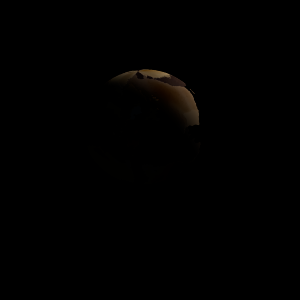|
|
Space Astro
|
Info for exoplanet "Panthys Petea"
| Scientific (actual) data |
|---|
| Name | KOI-7460 b |
| Planet status | Confirmed |
| Radius | 0.136 |
| Orbital period | 5.7051 |
| Semi major axis | 0.0599 |
| Inclination | 89.95 |
| Discovered | 2017 |
| Updated | 2022-06-08 |
| Tzero tr | 2454970 |
| Impact parameter | 0.1252 |
| Temperature (kelvin) | 947 |
| Publication | Published in a refereed paper |
| Detection type | Primary Transit |
| Radius measurement type | Primary Transit |
| Star name | 2MASS J19091658+4939251 |
| Right ascension | 287.32° |
| Declination | 49.66° |
| Mag i | 15.328 |
| Mag j | 14.213 |
| Mag h | 13.791 |
| Mag k | 13.783 |
| Star metallicity | 0.04 |
| Star mass | 0.88 |
| Star radius | 0.927 |
| Star temperature | 5455 |
| Star alternate names | 11602794 |
| Wikipedia article | KOI-7460 b |
Back
| |
| Fictional info (?) |
|---|
| Suggested name | Panthys Petea |
| Planet type | Hot planet |
| Having almost no atmosphere to retain heat, it has surface temperatures that vary diurnally more than on any other planet in its solar system, ranging from 175°K (-98°C) at night to 560°K (287°C) during the day across the equatorial regions.
.
The surface is full of hostile primitive insects called the "Bedysdaph Anan". They spend their life by consuming a substance called "Prax'fari". The Bedysdaph Anan are closely related to Dega Dita but with scales and vary in size from 6 to 7 meters. Most Bedysdaph Anan are known to endure temperatures from -30 to 0°C and to some degree prolonged periods without food which is common on Panthys petea. |
| Estimated population | 40000 |
| Atmosphere | Carbon dioxide | 64% |
| Oxygen | 28% |
| Methane | 7.9% |
| Water | 0.057% |
| Atmospheric pressure | 0.0031 bar |
 |
| Moon | Sejarn | Medium-sized almost round oceanic asteroid |
| Hoecalmi-noe | Small potato shaped oceanic moon |
| Bian Elcar | Medium-sized irregular ice moon |
| Brielre Medespo | Huge almost round gaseous planetoid |
| Aehefran | Small slightly egg-shaped oceanic planetoid |
| Rolassa | Medium-sized irregular crater-filled asteroid |
| Polyhi Ly | Huge round ice moon |
| Apushionn | Very small round rocky planetoid |
| Thimepro'ti | Very small potato shaped ice moon |
| Obemedeia-paldome | Small potato shaped ice comet |
| Gaeon-galaae Har | Huge slightly egg-shaped gaseous moon |
| Patia-le | Huge almost round oceanic asteroid |
| Phopan | Medium-sized round rocky asteroid |
| Ietmaka | Huge almost round rocky planetoid |
| Liaara Ad | Medium-sized round gaseous asteroid |
| Peartheus Dus | Medium-sized slightly egg-shaped gaseous asteroid |
| Peeuke Nand | Small round crater-filled planetoid |
| Tardes'tihali Si | Medium-sized irregular gaseous asteroid |
| Pidbest | Huge almost round rocky asteroid |
| Eurithys'dagel | Very small round rocky moon |
| Google search for Panthys petea |
|
Website by Joachim Michaelis
|
|
|
|